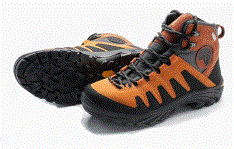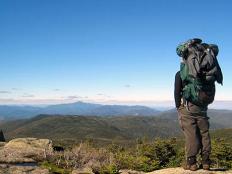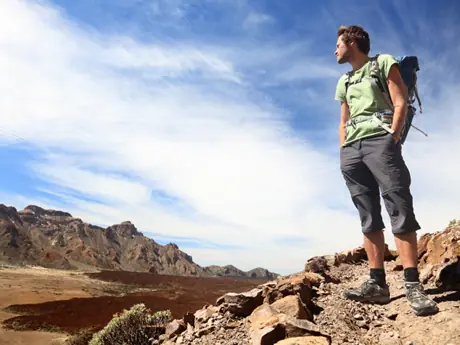
Have you ever slipped on wet leaves or rocks and landed on your backside? Or maybe wished you had an extra boost while carrying a heavy pack up a steep hill? If so, it's time to consider hiking poles.
If you think they're just for old folks, you're wrong. They're popular among hikers and backpackers of all ages. The reason: carrying poles is like having an extra set of legs. They help distribute the weight, relieve pressure from your legs and joints, and they can even give you a good arm workout.
Here are five hiking scenarios where they come in handy, no matter what age or hiking level you are.
Ascending
Whether you've reached a gentle ascent or the trail you're climbing has a granite staircase, you can use your hiking poles to give yourself a boost. On particularly steep patches, put both poles in front of you at the same time, dig in, and then heave yourself up.
Quick tip: Shorten your poles when going uphill.
Descending
Hiking downhill is often more treacherous than going up. The pull of gravity not only puts stress on your legs and knees, but also gives you less time to choose secure footing. Even with the best boots, walking on a slippery surface or across scree can make you do the "losing-my-balance" dance. In a recent study on hiking with a pack, falls were the second contributing factor to injuries suffered by study participants.
With hiking poles, you can minimize risk. Place the poles in front of you before stepping down or use them while walking through a rock-strewn pathway. They won't keep you from tripping, but they may keep you from tumbling completely.
Quick tip: Lengthen your poles when going downhill.
Crossing streams
Stream crossings can be difficult, especially when you don't trust the shaky log you're supposed to cross on. That's when hiking poles come into play. If you're worried about your balance, extend your poles so they can touch the bottom of the stream thus providing you with extra stability as you walk across. They also come in handy when crossing over loose or unstable rocks.
Crossing snow
If you expect snow on a hike, be sure to pack your pole baskets. This accessory is a round piece of light rubber, shaped like a thin donut, that goes over the end of each pole and snaps into place a few inches above the tip. Most poles come with small baskets, but wider baskets are better for snow. They'll keep your poles from slicing through the snow, allowing you to use the poles for balance as you cross the powdery surface.
All the time
Hiking poles are good to carry with you regardless of the hike's difficulty. Even relatively flat pathways can cause problems, especially if there's a loose rock. Plus, if you're carrying a pack, the poles help you distribute the weight. It's not just your legs that have to carry the load anymore.
So the next time you see someone with hiking poles, you'll know it isn't a sign of weakness. That hiker is playing it smart.
 Book your next hiking trip
Book your next hiking trip








Discuss This Article